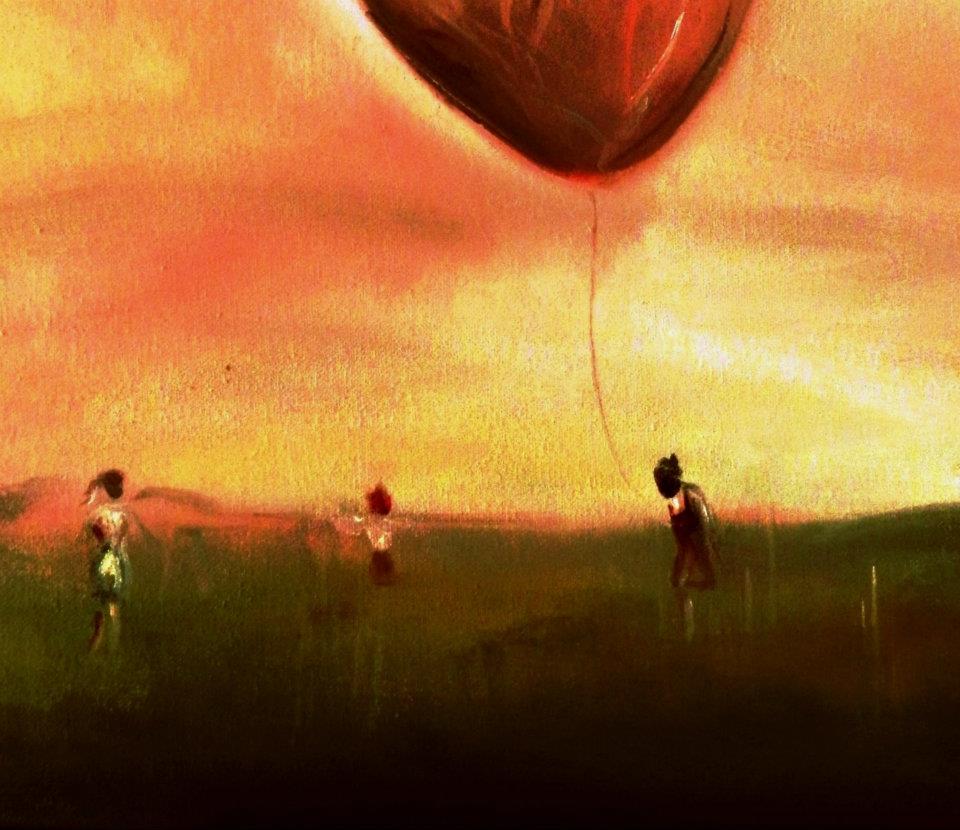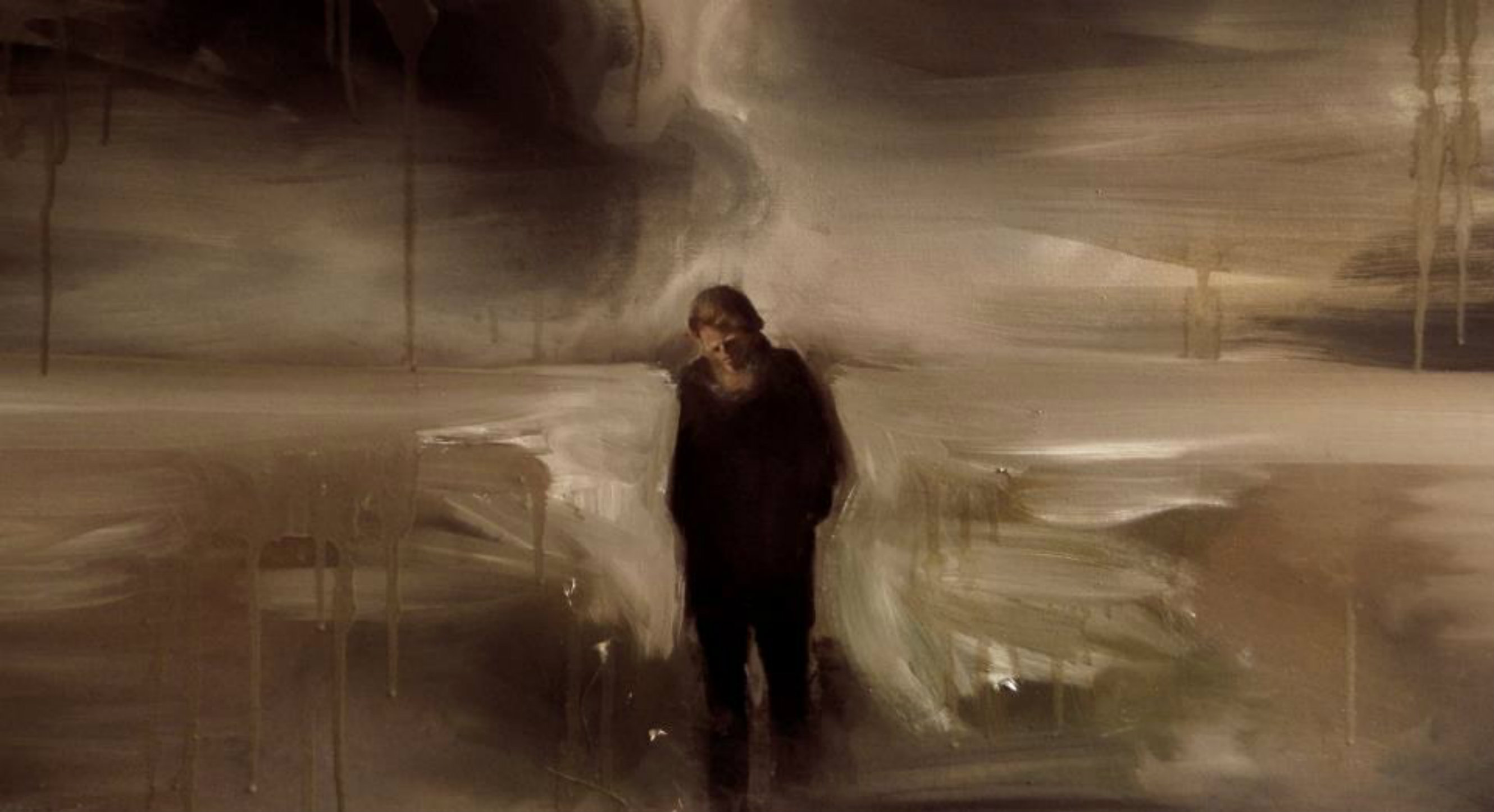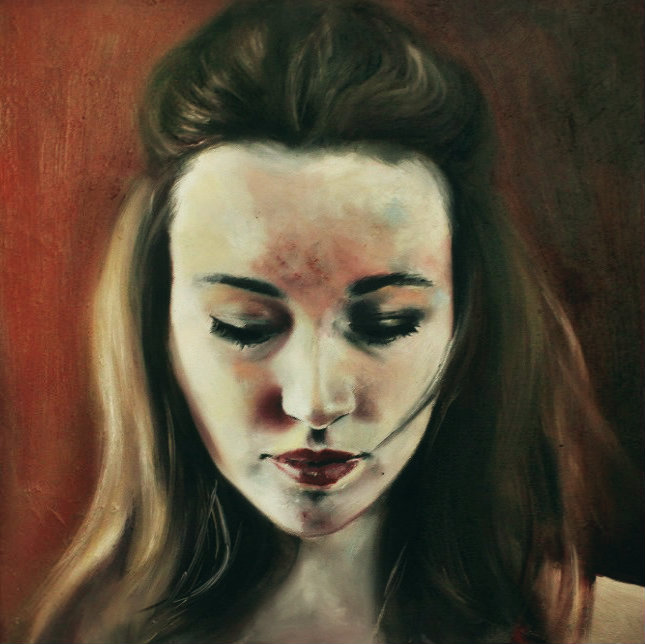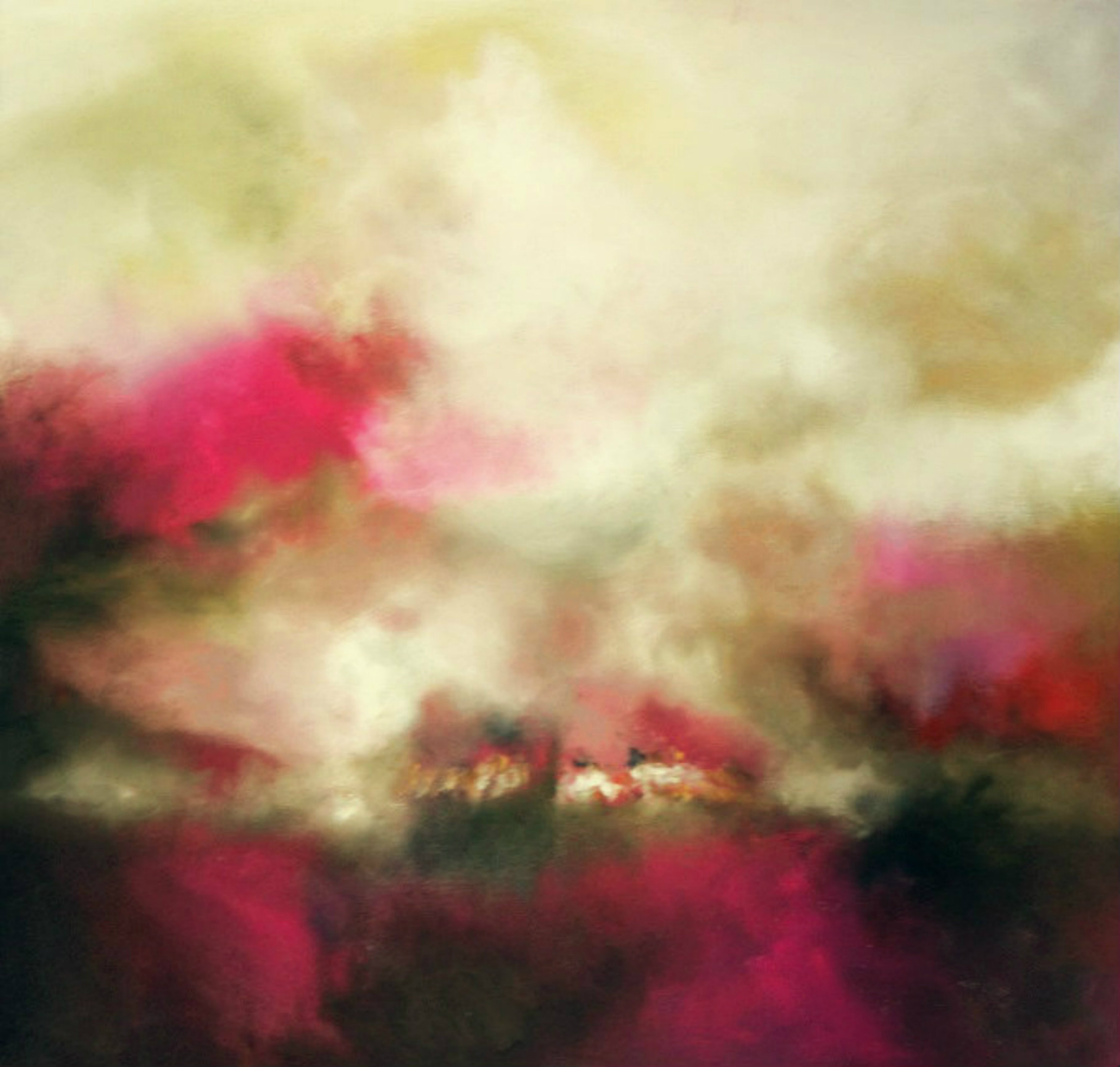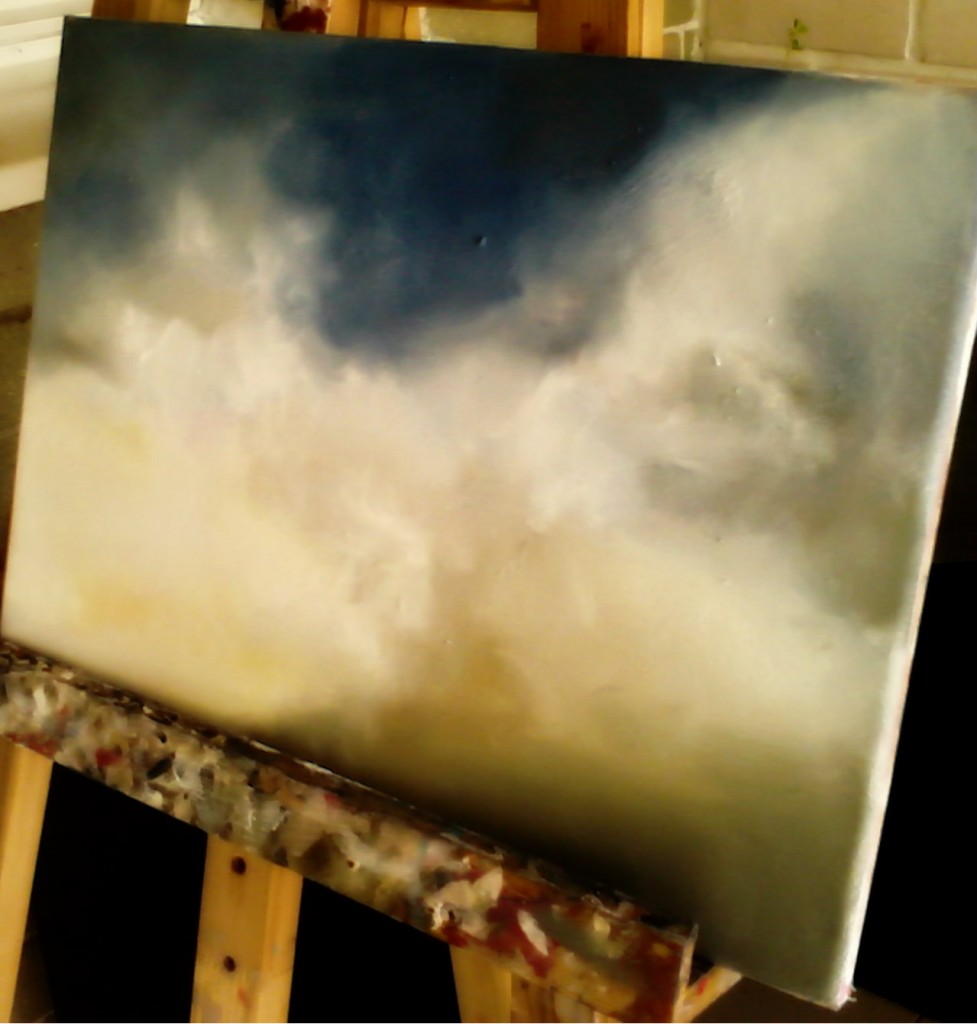Born in Czech Republic, visual artist Dagmar Hricková (Dag-mar H-ree-ck-ova) has led a somewhat nomadic life, taking inspiration and perspective from an array of ever-changing countries, surroundings, and cultures. She creates conceptual, thought-provoking art that glimpses beyond the surface of human interaction…sometimes dark, but always intimate and full of hope. Her images are often left in an unfinished state with scratched and streaked surfaces suggesting a sense of freshness and urgency.
Dagmar, aka Dasha, has worked, studied, or lived in Czech Republic, France, Italy, New York, Johannesburg, and currently, London, England. Her willingness to embrace every opportunity has led to an itinerant, colored life, full of ups and downs, and diverse creative challenges. Her most current work is in collaboration with noted photo-journalist, Marc Asnin, in a project involving large-scale, gritty and real, charcoal portraits. Read on to see where the wind might take Dagmar next…
Emily Frankoski: Where are you from originally and where do you now reside? How did you get “from here-to-there?
Dagmar Hricková: I’m originally from a little industrial town in Czech Republic. I have lived in quite a few places and loved each one in a very different way. For eight years I have been on an open-ended, nomadic adventure. I spent 4 years traveling between France and Czech Republic, before leaving to work and study in London, Italy, New York and Johannesburg. I am currently working in London, England. It all happened very spontaneously. I jump at opportunities.
EF: Talk about your time in South Africa, Johannesburg. How did this affect you and your artwork?
 DH: For me, South Africa is full of light, dramatic skies, beauty, suffering, and excitement. There’s rawness, edginess, and a sense a sense of fragility…which adds to its complexity. The art scene in Jo’burg is booming. Artists there are so fired up about new ideas and they want everyone to like what they’re doing. I think it was the frustration of the Apartheid era that eventually crystallized into a very strong artistic reaction. The country has been a great inspiration to me. It has also added much more strength and color to my work.
DH: For me, South Africa is full of light, dramatic skies, beauty, suffering, and excitement. There’s rawness, edginess, and a sense a sense of fragility…which adds to its complexity. The art scene in Jo’burg is booming. Artists there are so fired up about new ideas and they want everyone to like what they’re doing. I think it was the frustration of the Apartheid era that eventually crystallized into a very strong artistic reaction. The country has been a great inspiration to me. It has also added much more strength and color to my work.
EF: What did you want to be when you grew up? How does that compare to what you are living out in your adult life? Has your journey been linear or non-linear?
DH: I have always been stamped the little creative in my family…nothing has changed since then. I’ve always drawn and painted, which my parents liked because I was quiet and busy that way. They never pushed me into anything; they just let me do whatever I felt like doing. And of course, I wanted to be an artist!
Even so, I have never been one to stay on a straight-and-narrow path. I have had various jobs to earn money in order to take courses in various subjects. I have worked as an interpreter, a fashion stylist, and a kindergarten teacher. I moonlighted as a personal assistant and did quite a few photo shoots for fashion designers and magazines. Many ups and downs were involved.
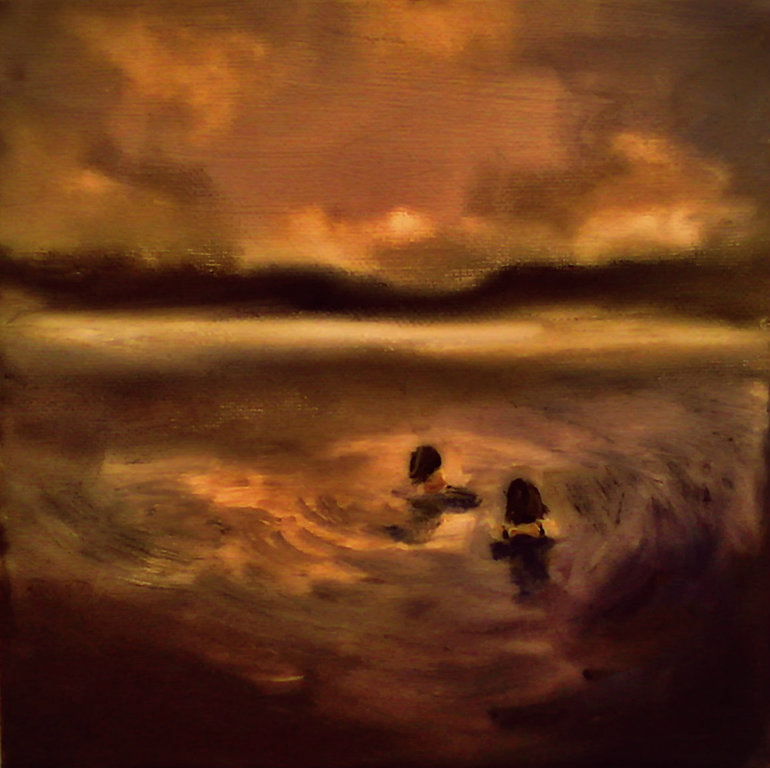 EF: If you haven’t done so in the previous answer, explain your general background? What were you like as a kid/what type of student were you/what did you spend your free time doing?
EF: If you haven’t done so in the previous answer, explain your general background? What were you like as a kid/what type of student were you/what did you spend your free time doing?
DH: I was very, very sensitive and shy. I was a very arty “soft kid” in a sea of tough kids. During classes, I wouldn’t actually listen very much to the teacher…I just kept drawing.
EF: How did your relationship with art begin? What is your background in art (undergrad/and grad)?
DH: As previously mentioned, I have been connected with art ever since I can remember. However, my background is in Business Administration and European studies. When it comes to art instruction, I have had couple of great and inspiring mentors along the way. I’m also quite self-taught from observing and communicating with other artists. If you work hard enough at something, you’ll eventually figure things out.
EF: Are there struggles to being an artist or has it always paid the bills?
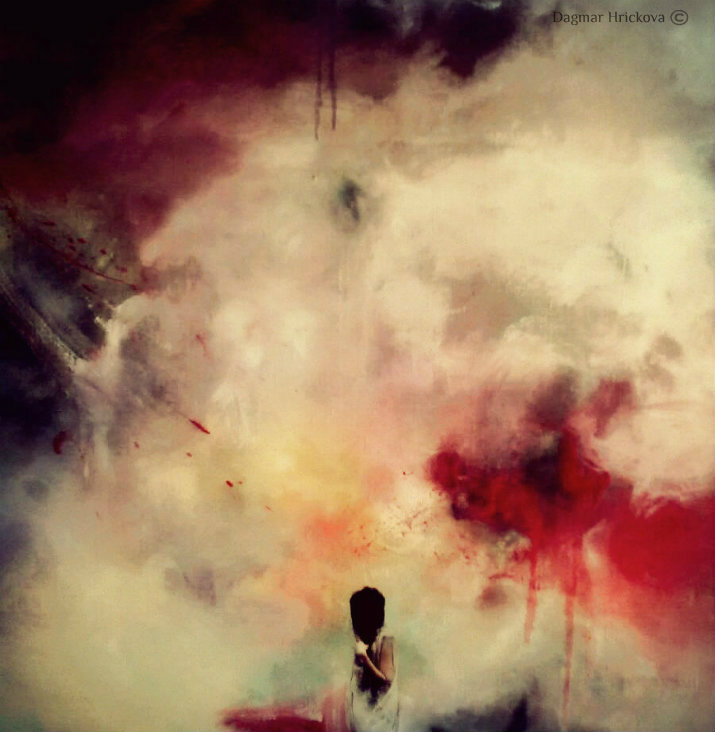 DH: Unfortunately I know very few people who have been able to pay bills solely from sales of their artworks. The pitfalls and challenges have proved to be more difficult than I imagined. But I think that these struggles – including struggles involved with marketing art – are not reasons to ‘give up.’
DH: Unfortunately I know very few people who have been able to pay bills solely from sales of their artworks. The pitfalls and challenges have proved to be more difficult than I imagined. But I think that these struggles – including struggles involved with marketing art – are not reasons to ‘give up.’
EF: How would you describe your artwork in 4 words or less?
DH: Intimate. Sometimes dark…but full of hope.
EF: In your opinion, why is what you do important? Why do you create what you do?
DH: I don’t necessarily think what I do is important, however I do firmly believe in art as an important vehicle for personal expression. I am not the best speaker, to be honest; I am pretty bad at expressing myself verbally. I always say art is not all about technical virtuosity, but about finding a visual language and communicating to the viewer what we see…no matter what medium we use.
EF: If you weren’t an artist, what would you be and why?
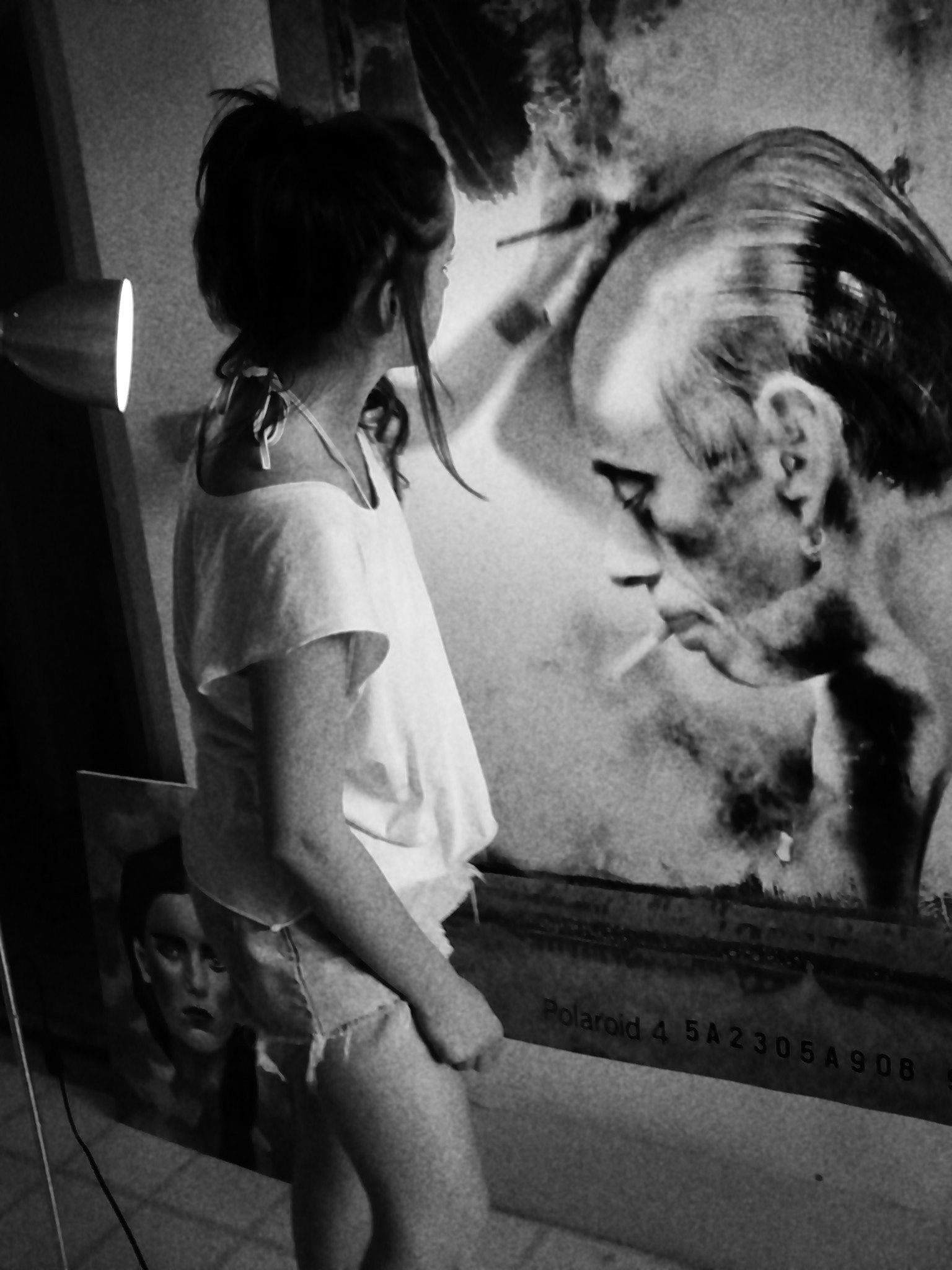
DH: If art was not my no. 1 passion, I would definitely have pursued a career in asylum, refugee and immigration law. I have always been drawn to immigration, asylum, and nationality matters. Since 18 years old, I have essentially been an immigrant. I have met so many people struggling to obtain visas…some eventually deported to home countries. Global immigration is such a complex area.
CURRENT/FUTURE PROJECTS
EF: Tell us a little about your current project with Marc Asnin. Who is he and what will you both be creating together?
DH: I have been collaborating with Marc since March 2013. There have been great times and easy communication between us.
Marc is a Brooklyn-born, established documentary photographer, well-recognized for a raw and intimate photo- biography of his Uncle Charlie. The book is a dark narrative covering more than a quarter century, charting a struggle with poverty, mental illness, unfulfilled ambition, loneliness, drug dependency and crime. Currently we are working on a second, hand-written version of the Uncle Charlie book. I firmly believe handwritten records are fragments of individual histories -expressions of self that bring forth the truth of our inner lives.
EF: What are the stories you like to tell in your artwork? What are the common themes/what are you inspirations?
DH: In my paintings, people exist and inhabit space equally. Even my smallest paintings all fit together in a specific way. Each individual is allowed to dwell in in dreamlike, surreal, and sometimes fantastic scenes, reflecting vague memories of childhood and adolescence.
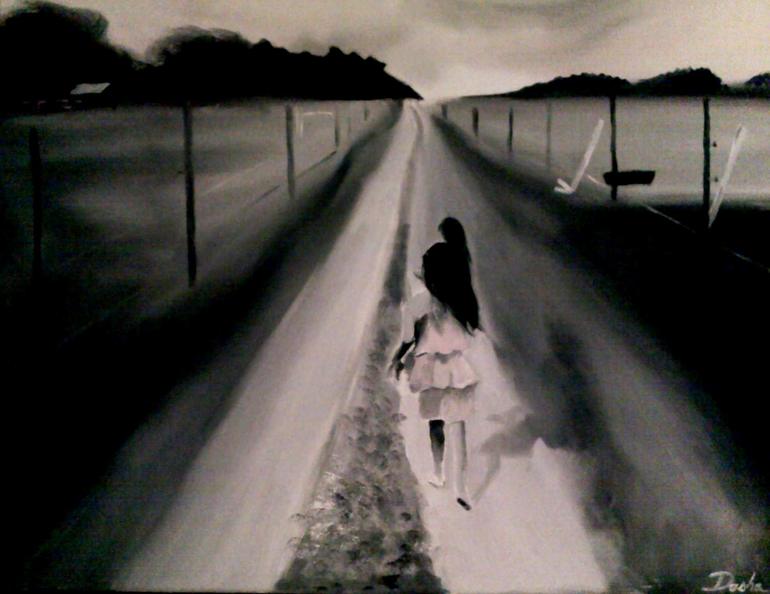 I aim to capture an essence of escapism, loneliness, or just a thought, with images floating and blending into the background…limitless possibilities…and at the same time…nothingness. It is likely this approach comes from a childhood spent in a small industrial town in Czech Republic.
I aim to capture an essence of escapism, loneliness, or just a thought, with images floating and blending into the background…limitless possibilities…and at the same time…nothingness. It is likely this approach comes from a childhood spent in a small industrial town in Czech Republic.
EF: Walk us through your creative process. How do you get from point A to finished product? How long does one piece of artwork usually take you?
DH: I work mostly with oil paints but also use charcoals, textiles, photography…always experimenting. I think one has to take risks and not get too comfortable in one way of working. There’s no plan behind my color choices. It’s very spontaneous, instinctual. However, when I begin a project, I work through ideas intensively.
Sometimes the result is rubbish. That’s kind of the big open-ended question from all these years of work. Intention is everything, no matter what medium or style a person embraces.
 EF: What have you learned about yourself through your artwork/projects?
EF: What have you learned about yourself through your artwork/projects?
DH: I don’t necessarily learn about myself, but very often do discover stories within my drawings which explore complicated struggles. I find it magical when my drawings finally turn into “beings,” although the in-between stage can sometimes be very frustrating.
EF: Do you work on one project at a time until finished – OR – do you work on multiple projects simultaneously?
DH: I enjoy working numerous and diverse projects simultaneously. It forces me to periodically step back from one work, think about it, and often envision it from another perspective. I never commit to just one project at a time; that would make me very unhappy.
EF: Do you ever have the artist equivalent of “writers block?” How do you get past this so you can keep/finish creating?
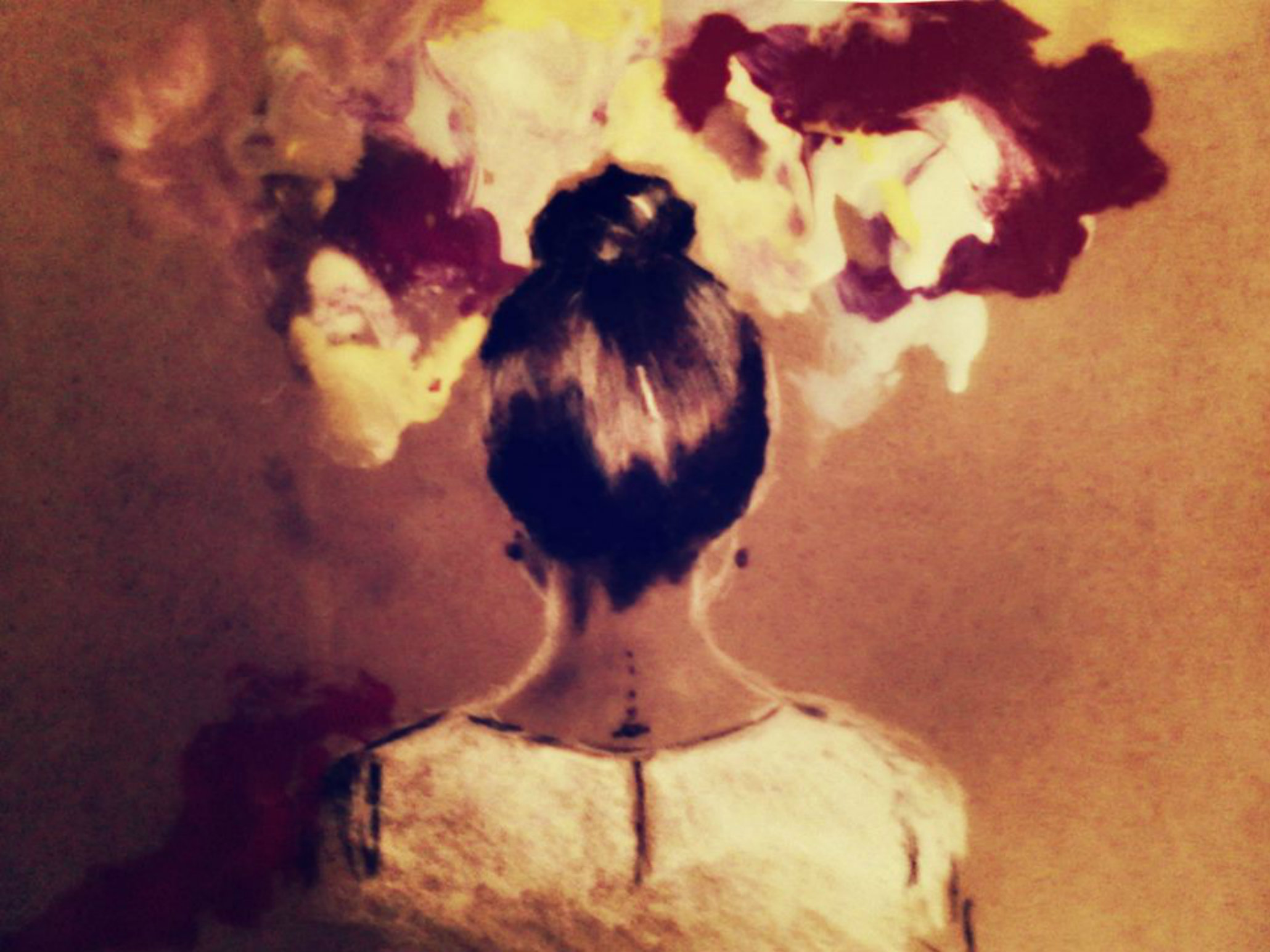
DH: Oh man! Many of those. Especially during a “settling down” period in a new country. It often takes me two months before I can start creating. During these periods I keep observing, embracing new experiences, changing horizons. I am pretty sure these blocks can lead towards making something even greater in the end.
The painting process however, takes me to a different world. I kind of zoom out of a real life, literally. I lose a sense of time, I forget to eat, or respond to emails. I rarely make a phone call. But when I’m not creating…I’m Dasha. I’m a girlfriend. I am organized. I do laundry and I take care of stuff.
EF: When you are not creating, what might one find you doing?
DH: I am scrapbooking, reading, exploring new artists, spending time with my partner. We love good music and making meaningful connections with people we meet. He is a Spaniard, very funny and sociable; myself, I love to hang out, but It has to have a purpose…because I truly enjoy being in my own microcosm.
EF: For whom do you create? Who is your audience?
DH: Well, when it comes to a two-way connection between me and a viewer, I have no planted outcomes. In the end, art touches everyone in such different ways. It makes me very happy when someone identifies with my work, when they see something they can relate to.
 EF: How do you promote your work? Do you seek out opportunities or do they come to you?
EF: How do you promote your work? Do you seek out opportunities or do they come to you?
DH: Internet has been a great promotional tool for me. I’ve gotten more attention from just having a website than from any other form of networking. Globalization has made it easier for artists nowadays. And yes, I do seek our opportunities, but I also always jump at any new opportunities that come to me.
EF: How do you continue to challenge yourself and grow as an artist?
DH: I think it is essential to work hard and often. It is also important to take chances. I love when someone asks me to do something outside my experience. This forces me to grow.
Speaking of the future, I always try to have a plan; however, my nomadic ways sometimes makes this process harder. I dream big, and want to work across disciplines. I want to publish a children’s book, travel the world for shows, and collaborate with more artists.
EF: Do you sell your artwork? If-so, where can we buy it?
DH: Yes, I do! You can buy it directly from me. I also have two people who take care of sales, one in Czech Republic and one in America. I also have prints available for purchase via Saatchi Gallery Online: http://www.saatchiart.com/daaasha.
EF: What artists do you admire and why?
DH: In order to impress me, art must be human yet intense. The list of artists I admire starts with William Kentridge, Alex Kanevsky, and Adrian Ghenie. I am inspired by great and rare qualities in individual works. I admire personal expression that has nothing to do with trends or status and everything to do with the unspeakable depth and warmth of being. If this makes sense…
EF: Do you have a favorite piece of art?
DH: Yes, Her Absence Filled the World by William Kentridge, on display at Museum of Modern Art in NY.
EF: What is the best piece of advice you have ever received?
DH: “Fortune favors the bold.”
EF: What is your favorite book?
DH: Norwegian Wood by Haruki Murakami, one of the most beautiful and emotional books I have ever read. It guides us through some of life’s darkest and most dangerous territories with wisdom and warmth.
EF: What are you currently reading?
DH: I am currently reading a lot of biographies about artists, designers, photographers, and actors. They are intriguing, educational and so, so inspiring.
EF: Do you have a favorite quote?
DH: “Nothing needs to be fixed. Everything is unfolding perfectly. So when you stand in your now accepting that all is well, then from that vibration, you become surrounded by more and more evidence that all is well. But when you’re convinced that things are broken, that there is pollution, or that things have gone wrong, or that the government is doing conspiracies… then what happens is you get caught up in that vibration, and you begin to manifest that kind of stuff, and then you say, ‘See, I told you that things were going wrong.’” – Abraham Hicks
EF: Where can we see more?
http://www.saatchiart.com/daaasha
http://www.thenewyorkoptimist.com/DagmarHrickovaNov1_2012.html
